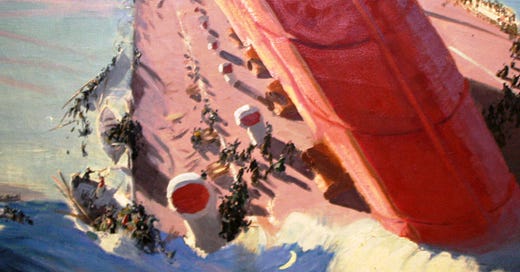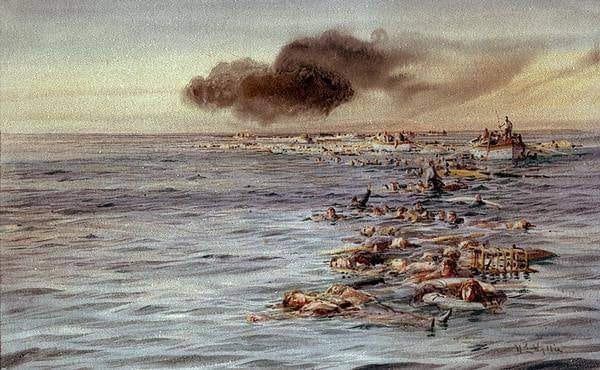The Lusitania, May 7, 1915.
Back in late 2013, Penny and I began discussing book ideas with our
editor at St. Martin’s Press. Eventually we all hit on the idea of doing
something for the hundredth anniversary of the sinking of the Lusitania in
May 2015. Things quickly came together, and we began, digging into
accounts left by survivors and attempting to piece things together in a
cogent way that made narrative sense.

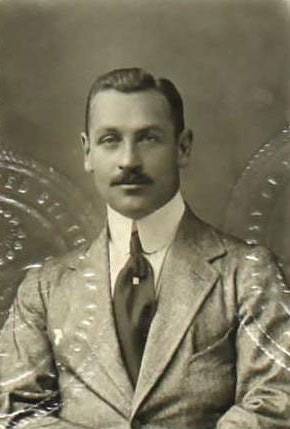
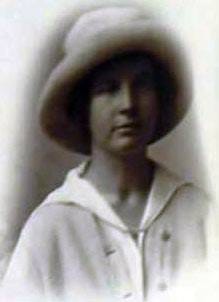
Although for me, Titanic was my first doomed ocean liner of interest, as
time passed I came to appreciate Lusitania’s interiors. Titanic was
overtly luxurious, at least for those fortunate or unfortunate enough to
book First Class on her one and only voyage. Aside from her grand
staircase, though, I thought her public rooms suffered from both an over
abundance of decorative detail as well as low ceilings. The French Line
once took a dig at such arrangements in a dining room – “low ceilings
don’t aid digestion” was I think the phrased they used. But looking at
photos of the First-Class Dining Salons of Lusitania and Titanic, you gain
a real sense of space with the first and a very claustrophobic effect with
the second. Lusitania’s other First-Class rooms, including her Drawing
and Smoking Rooms, sported impressively high, vaulted ceilings crowned by
arched skylights that gave a sense of spaciousness lacking in the ships of
the White Star Line.
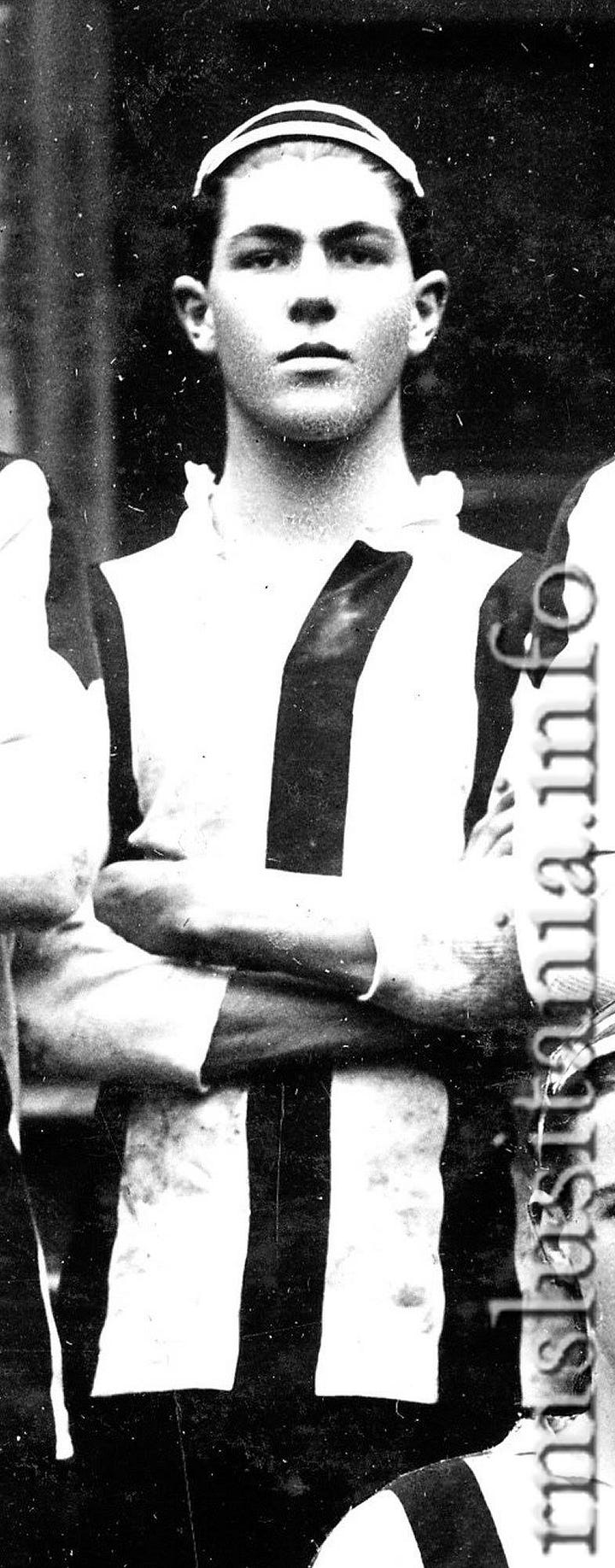

Figuring out how to tell both the story of the ship and its passengers was
a bit of a headache, but I’m proud of the way we eventually organized the
book, giving enough space to Lusitania’s rooms to let readers have a real
sense of what the ship was like as well as exploring the lives of a select
group of people. In our efforts we were fortunate to have the help,
advice, and wisdom of our friend Mike Poirier, who knew the answers when
we had questions. The book would not be what it is without Mike’s friendship and expertise.
The thing that indelibly sticks in my mind is the aftermath of the
sinking, with hundreds of innocent passengers floating about in the Irish
Sea amid dead bodies and wreckage. There are heartbreaking stories, and
horrifying images that remain with us. It’s impossible to write a book
and spend time with characters you really dislike: in this case, those who
lived and those who died made for easy companions as we struggled to
present their stories in ways that recalled both the breadth of their
experiences before they boarded Lusitania – hopes, dreams, troubles, and
ambitions – with the tragedy they suffered. But the finished result made
the efforts worthwhile, and it’s a book that hopefully continues to have
some resonance and interest today.

